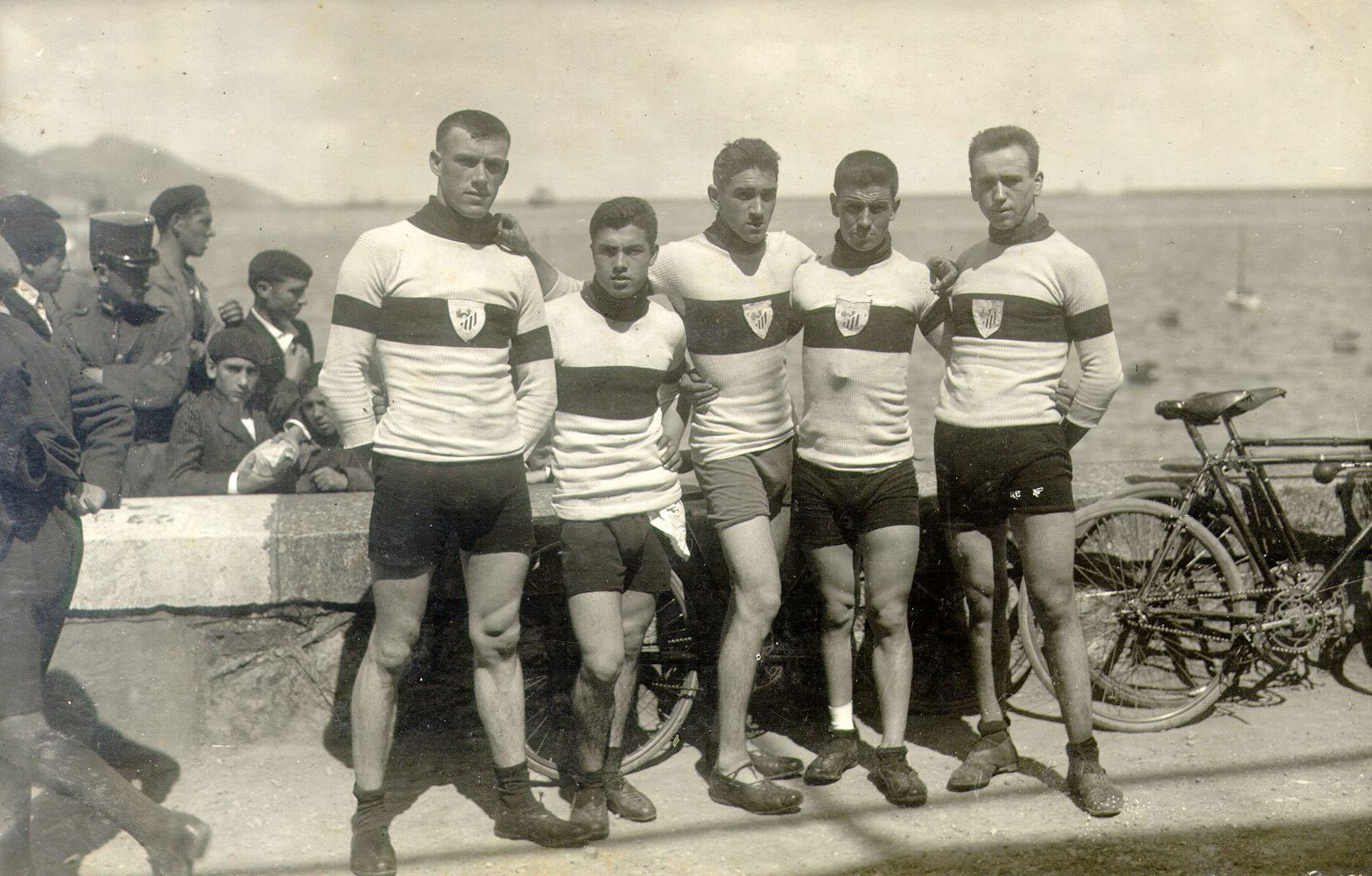The Athletic Club cycling section
In the twenties of the last century, the club had a team that wore the red-and-white maillot and organized different competitions.
In the founding statutes of Athletic the object was “the promotion and propagation of all kinds of athletic sports, and especially that known as Foot-ball.” Because of this, the Athletic in addition to football had other sports sections, more specifically with groups of athletics, mountaineering, cycling, swimming, rowing, ball and jockey. None of the sections were notable for their longevity, all saw the light of day in the 1920s, and none survived the civil war, but for their rich record and the enthusiasm with which they were welcomed by sportsmen and amateurs.
On 12 March 1924, on the initiative of some of its members, the Athletic Club inserts in press an advertisement by which it “invites for tomorrow the cyclists of the club to a meeting which will take place in the halls of the Society.” Runners such as Domingo Gutiérrez, Eduardo Rubio, Fernando Ibáñez, Ángel Errasti, Adolfo Urrutia, José Arechavaleta, Aurelio Miranda or Marcelino Loroño attend the meeting. On 13 March 1924, the Athletic Club’s cycling section was born.
And it was born with strength, because as a true success for the cyclists of the Athletic red-and-white maillot, this first year of 1924 can be considered. They took part in the most important events in the territory, including the Bizkaia championship, the Spanish championship and the 1st edition of the Vuelta al País Vasco. As far as results are concerned, victories were achieved in Zumarraga, Tolosa, Gernika, Las Arenas, Plentzia circuit, 1st Getxo circuit… all prestigious events, some of which are still being disputed today.
Consolidation of the section
Also, at an organisational level, Athletic collaborated in the new cycling adventure. The 1924 Bizkaia Championship was organised by our club. With the dispute of this race, on September 28, ended this first cyclist year for Athletic.
The 1925 season served to consolidate the Athletic cycling section and the work in the offices by the Athletic Club Cycling Commission, resulted in one of the most important races in the Basque calendar: the G. P. of Vizcaya, in whose two editions, which joined the most powerful of the state squad, Demetrio del Val and Ricardo Montero won.
In the merely competitive part, we participated in numerous races, and the effort in the road on the part of the cyclists increased the showcases of the Athletic with 9 first prizes and 7 social championships, (Championships of Bizkaia, Lekeitio, Amorebieta, Mungia, Eibar, Getxo, Muskiz…).
A successful record of cycling without continuity
During the year 1926 the outstanding performances by our runners continued. In terms of championships, Domingo Gutiérrez reached second place in the Spanish long-distance championship with the same time as the winner, Ricardo Montero from Gipuzkoa, and the Championship of Bizkaia, in its long-distance and speed modalities, went to Cesáreo Sarduy, being the bronze in speed for another one of ours: Fernando Ibáñez.
The victories in the III Vuelta a Guipúzcoa (Gutiérrez), and in its social trophy, in the social trophy of the Prueba Eibarresa, in the Gran Premio Ayuntamiento de Pamplona, in the Vuelta a las Encartaciones… show the power of the Athletic team.
The 1927 season continued to be successful for the red-and-white cyclists, highlighting the triumphs of Sarduy, the new speed champion of Bizkaia and Basque Navarre, and winner in the velodrome of Ibaiondo in the international long-distance race, and of Cepeda, the champion of Bizkaia in the long-distance race.
But in despite the illusion aroused by the cyclists, the situation did not help the consolidation of a project of such a high weight and in need of maximum care. At the end of the 20s, Athletic was taking accelerated and definitive steps towards the professionalisation of the footballer. Due to this, the club focused all its economic resources exclusively on football and given that the budget of the different sports sections was too big and unbearable, they stopped financing them, thus losing their boom until their complete disappearance.
* Excerpt from the article published by Asier Arrate, director of the AC Museoa, in number 105 of the Club magazine.

